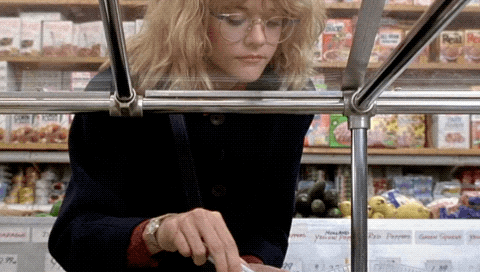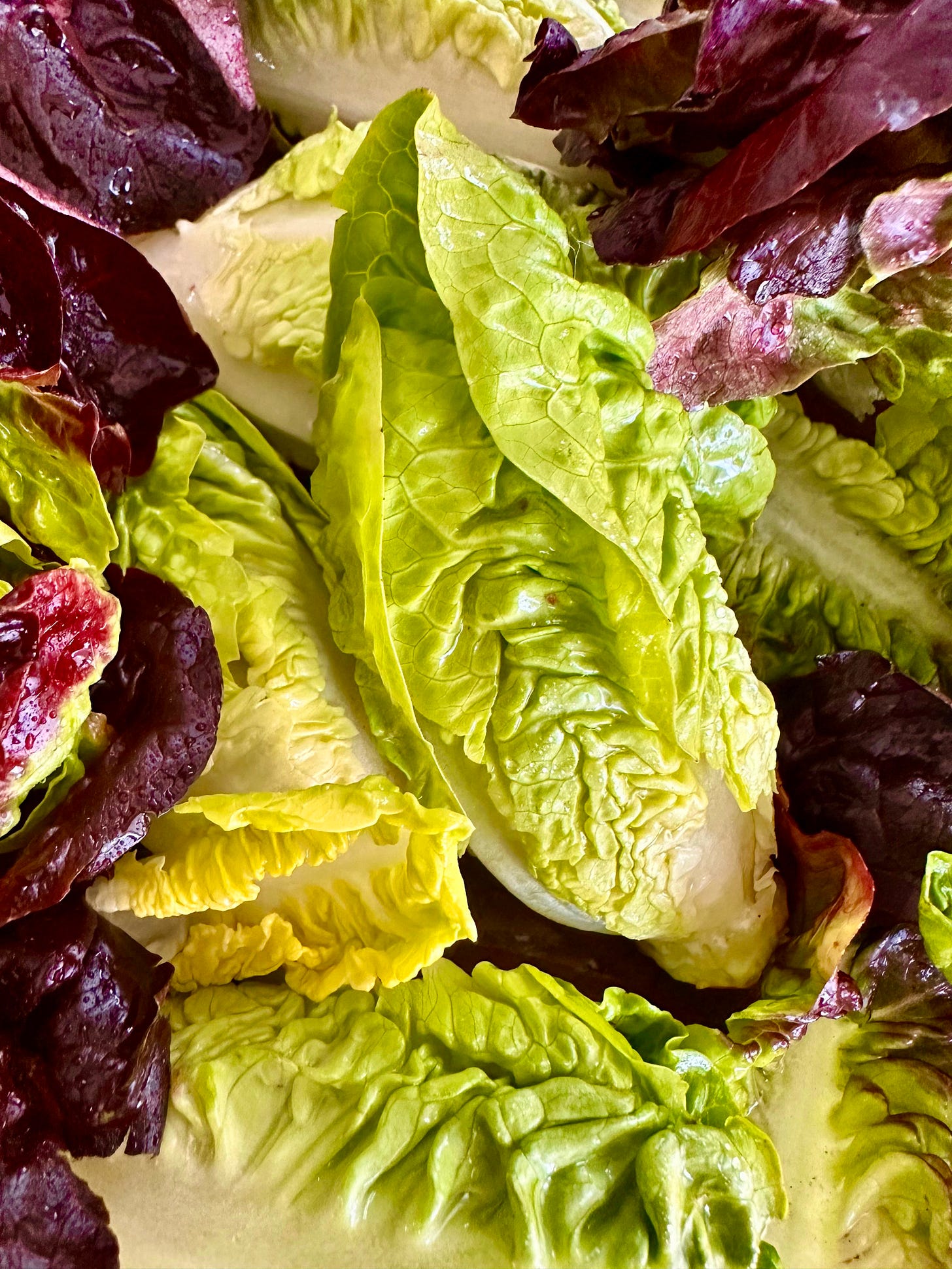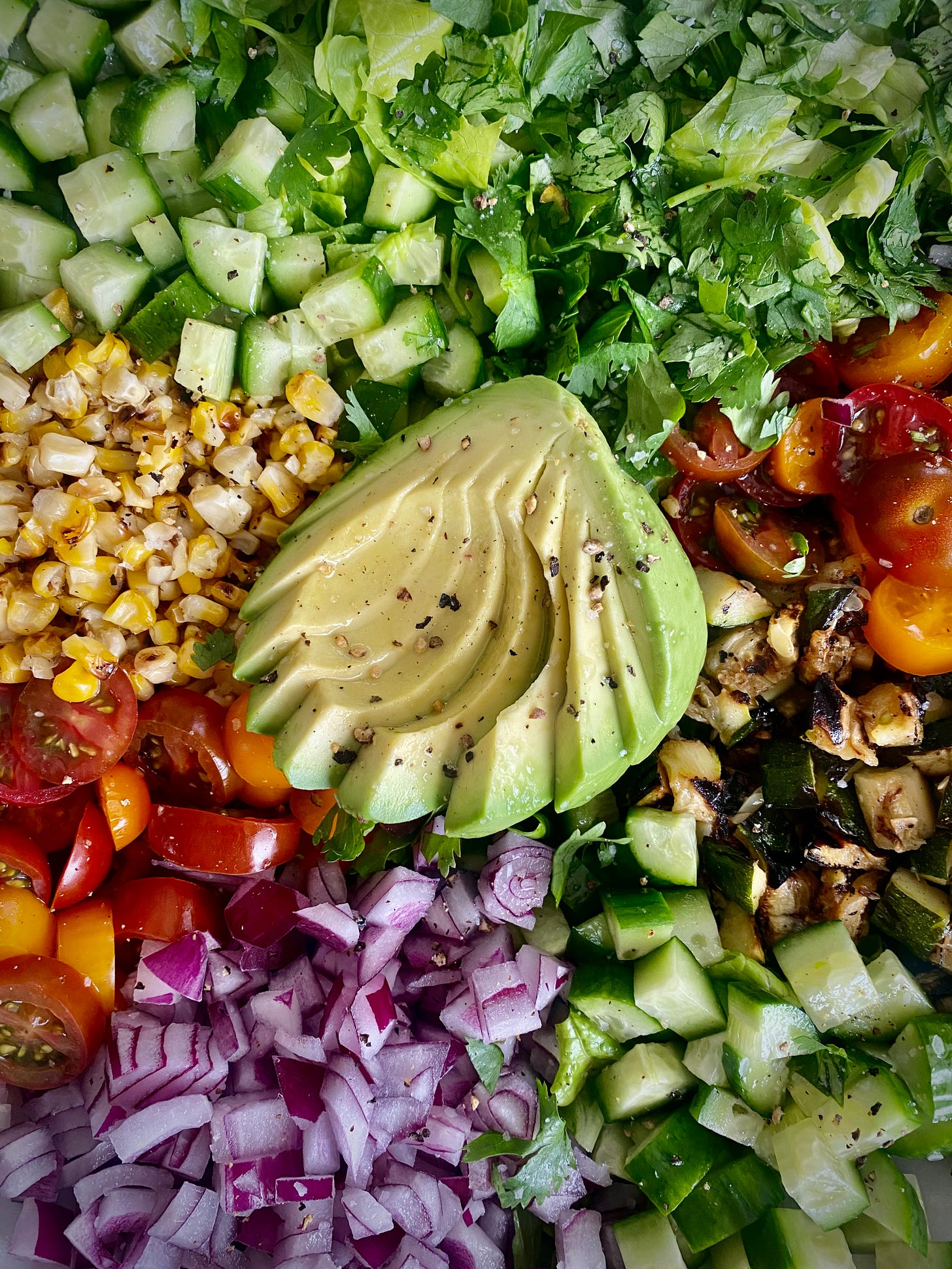Hey Pot Heads,
I'm a big fan of salads. A shocking reveal, I know. When I first met my wife, she claimed to not like salads. Yes, the woman who brought me a bushel of rainbow carrots instead of flowers to our first date claimed she didn’t like salads at all. I immediately called bullshit. She’d never had a good one because you can’t dismiss such a giant, versatile category of food like that. Salads have gotten a bad rap over the years thanks to bad cooks, bad recipes, and a general hostility towards vegetables. I’ve had some salads that we’re clearly made with malice, we all have, but I changed her mind and I’m going to change yours too. A few simple tricks can turn your salads from boring plate fillers to craveable dishes that are essential to every meal. I know things are certified bananas right now but you still need to eat. Let’s make salad your friend.
In a gear up for warmer days ahead, we’re starting a three-week Salad Boot Camp here at Stir the Pot. Each week will be filled with tips, tricks, and lots of recipes so you can make the most of your salad days. (I won’t make that joke again, I swear) This Salad Bootcamp is being sponsored by the one and only SaladSprinkles which means I get to bring my recipes out from behind the paywall to share with all of you, free of charge. Want your own SaladSprinkles? Click right this way and use code STIRTHEPOT for 15% off your order. After this bootcamp, you’re going to be an unstoppable salad making machine so let’s get started.

This week is all about my Garden Salad Theory. There are a ton of different kinds of salads: bound salads (think thick mayo-based potato salads), pasta salads, fruit salads, jello salads (pure evil in salad form), and many, many more. For the purposes of our work together we are focusing on garden salads and slaws. They’re the most common salads in North America and what you’ve been thinking about the whole time you’ve been reading the word “salad” anyway. Once you get my Garden Salad Theory locked in, you’ll never build a basic ass salad again. To build a killer garden salad, there’s a simple formula as you can see by my salad bowl graph below.
First up, the lettuce/greens. Choosing the right lettuce for the job is crucial for salad success. It should make up about 70 percent of your finished salad, so if you pick a leaf that’s out of sync with the rest of your ingredients, then the salad will never hit quite right. It’s like picking a noodle for a pasta dish. The shape, taste, and texture of the pasta lends itself better to some styles of sauce than others. It’s the same with lettuce. Crispy romaine and kale can support heavier dressings like ranch or Caesar. Softer leaves like butter lettuce or red leaf pair better with a light vinaigrette. You just want to play to the strength of your lettuce. Once you start thinking about it, it’s intuitive. Light leaf = lighter dressing. See? Not so hard right.
The next step toward salad success? Clean, refreshed greens. Lettuce is a plant, so it starts drying out the moment it’s picked, just like flowers do. Giving the leaves a good bath helps them crisp back up to their former glory. Also, lettuce is dirty no matter what it says on the bag. Wash it. I like to lightly rinse it, chop, then do a thorough wash. You aren’t putting dirty vegetables on your clean cutting board before you wash them, right? Ok, just checking.
After you cut up your lettuce, give the leaves proper wash, but don’t just throw them back in the bowl when you’re done. Soggy lettuce sucks. The water that is still on the leaves mixes with the dressing and waters the whole thing down. It’s a weirdly common mistake but easy as hell to avoid. I don’t believe in buying tons of kitchen gadgets, but if you’re gonna be serious about salads, you’ll want a salad spinner. They’re affordable, last forever-I’ve had mine for over 10 years-and they double as lettuce storage devices. The centrifugal force of the spinner shoots all the water off the leaves, out the slotted sides of the cage in the center, and it pools in the bottom of the spinner where you can pour it out. Then store whatever lettuce you don’t use in there. The cage allows for lots of airflow guaranteeing your lettuce will stay fresher longer than if it was sitting in a pool of water stuffed in a plastic bag. A soggy salad doesn’t deserve a place on your plate. No spinner? Do like our grandmas did and throw your greens into a clean pillowcase and swing that sucker around outside. Again, centrifugal force will do its thing and you’ll be left with clean greens plus your neighbors will be intrigued by your weird behavior. They need a low-stakes mystery to keep them busy anyway.
Ok, now your base is set and it’s time for the real stars of the show: your ad-ins, toppers, and dressing. Together these make the remaining 30 percent of your salad but they’re the soul of the bowl. What you add to your lettuce will determine all kinds of things on your road to salad satisfaction: nutrient density, texture, aesthetic appeal, how full you feel, and for how long. If you’re making a side salad, you might be happy with just greens, a few herbs, dressing, and some nuts or SaladSprinkles for a little crunch. But for a salad worth savoring, you’re gonna want to pay attention here. Now for the add-ins.
These are all the additional ingredients you incorporate into the body of the salad and should account for about 25 percent of the whole dish. Here is where you add chopped-up vegetables and fruits like carrots, cucumbers, bell peppers, beets, tomatoes, apples, and leftover roasted veggies, whatever you’re feeling. Try to stick with what is in season in your area for the best flavored and most affordable produce options. Leftover cooked grains like barley or quinoa are great to toss in. So are leftover beans, cooked tofu, or defrosted veggies from the freezer like shelled edamame or roasted corn kernels. You get the idea. All these add-ins bring extra vitamins and minerals to your dish while contributing even more heart-healthy fiber that will keep you feeling full for longer.
Once you’re done chopping all your add-ins, you can lightly season them right on your cutting board if they aren’t seasoned already. Just sprinkle a little salt right on top, maybe a squeeze of lemon, or a dash of garlic powder, whatever makes sense. If you were making any other kind of dish you’d season all the parts so follow the same rule for salads. SEASON ALL THE PARTS.
Ok that’s it for our first installment of Salad Bootcamp. If this post inspired you to get in the kitchen, I wanna see those salads. Post them here on Substack, in the comments below, or someplace on social media and tag me. Tomorrow, paid subscribers are getting our first ever discussion about what we think we should be buying in bulk right now to keep our kitchens as stress free as possible given the uncertainty around tariffs, etc. I’ve got lots of suggestions but I want everyone to weigh in too.
Next week is all about the real reason we all eat salads: the toppers and the dressing. You know it’s true. But right now, you’re probably craving some salad. I know I am. Here is one of my favorite recipes to get you through, thanks to the lovely folks at SaladSprinkles: a chipotle caesar hand salads but you could make it bowl with zero sweat. Enjoy!
xoxo,
Michelle











Im so excited these posts will be available for everyone! I need more salad in my life and cant wait for you to get me excited about it.
Since I started making my own dressings I have found a whole new appreciation for salad. DYI dressings are the best to top a nice green salad with 😋!!!